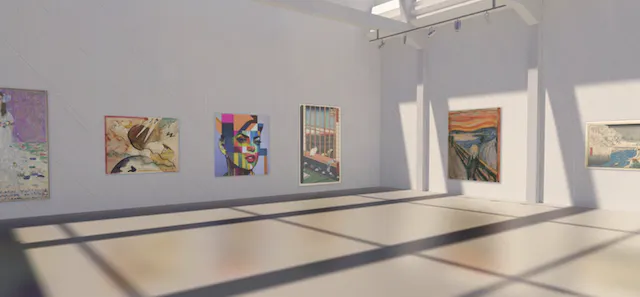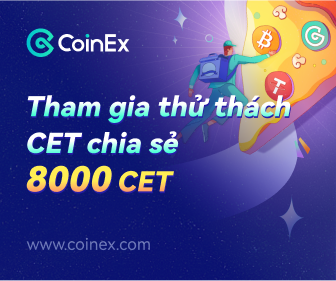
Freeports have long been associated with the storage and trade of high-value art and collectibles. They traditionally offer a secure and tax-free way to engage in back channel sales of luxury assets, making them attractive to wealthy collectors and investors.
With the advent of blockchain, a more open and democratized version of these special facilities has emerged. Meet Freeport , a new platform that will begin offering fractional fine art investments later this year. Their plan is to pull masterpieces out of the hidden storage of wealthy individuals and give access to normal investors – not just the uber rich.

This is now possible thanks to the fractionalization and tokenization of fine art assets via an SEC compliant approach. Multiple individuals can collectively invest in a single asset (much like fractional NFTs), such as an Andy Warhol or Jean-Michel Basquiat painting. People of all income levels can gain exposure to fine art with just a few hundred bucks – rather than the millions they might otherwise need to purchase a full piece. When the asset is re-sold, profits are proportionally distributed to investors.
By utilizing ERC20-style tokens on Ethereum, they’ll also be able to leverage the web3 economy and its associated utility – including decentralized finance (DeFi) protocols that facilitate lending against real, hard assets. It’s a whole new approach to bringing valuable assets on chain.
Crucially, Freeport will allow the artwork to be visually experienced, rather than just viewed as a token in wallet. They’ve created a virtual gallery where people can view and interact with the assets stored within Freeport – and soon to do it socially, by liking and commenting on artwork together. It also happens to be one of the cleanest NFT galleries we’ve ever seen.
By taking the responsible legal approach while also leveraging new visual technologies and web3 paradigms, Freeport has the potential to become the de-facto physical art investment platform of the future.
Members of the NFTCulture team have been working closely with the Freeport team ahead of their April launch. We sat down with their CEO Colin Johnson recently to learn more about Freeport and their goals.
We saw a significant customer need: the ability for normal people to access fine art investing, which historically has been an asset class reserved for multimillionaires. We also fundamentally believe that more human value should be moved onto blockchains where it can be most efficiently fractionalized, stored, and traded. And we’re lucky enough to have access to a vast collection of Warhols directly from the collection of the incredible Baby Jane Holzer. All of these factors gave us a strong starting point to build the future of art collecting.
The team is being advised by Michael Haber, a legend in the NYC art broker scene, and Baby Jane Holzer – a real estate investor and former Warhol superstar. As one of Warhol’s early muses and a lifelong friend, Holzer was featured in his iconic early silkscreen productions. The artwork in Freeport’s first collection will be coming straight from the collections of Haber and Holzer.
What makes this Freeport unique?
We’re subverting the idea of classical Freeports, which are these locations where only the uber rich hide their art away or trade it in a tax advantaged manner. We want to draw artwork away from only the top .01% of individuals and offer it to everyday investors. We also want more people to enjoy the art, so we’re digitizing and representing it in a three dimensional space where people can not only gain financial exposure, but also enjoy displaying it as well.
What is the price?
We’ll be offering 1,000 lots during the initial sale, ranging in price from $200 to $850 depending on which piece customers are looking to buy. It’s a uniquely low requirement to gain exposure to some of the most historic artwork on planet earth. Generally you would need to pay hundreds of thousands of dollars for these assets – and be lucky to even find them.
Are there any mechanics we should know about?
Because each token represents a real equity investment, our offerings will follow SEC regulations. Tokens can be traded on the Freeport secondary market once it opens after launch. When the paintings are re-sold, holders will be paid out proportionally based on their equity share.
While much of the attention is on art via NFTs, Freeport assets are going to be available as in the form of ERC-20 derivatives that comply with current SEC guidelines and regulations. Tokens are fully fungible, meaning that they can be easily divided into smaller units – much like classical equities (stocks), but on chain. This allows for the art to be split between multiple individuals in any percentage they choose – although there is a maximum of 10% equity for each asset.
What is the vision for Freeport gallery?
Freeport gallery will be the premier location for buying, selling and collecting all of your art investments, both digital and physical, in a legally compliant manner.
What is the importance of provenance in art?
The value of art is subjective at its core, and value within that subjectivity stems from storytelling. All humans can relate to stories. Provenance is truly the story of the physical piece, which acts to augment what would otherwise be purely aesthetic.
Learn more about Freeport:
What is Fractional Art?
Fractional art refers to art that is owned and controlled through the use of digital tokens, rather than physical objects. These digital tokens can represent ownership, access, or other rights related to the art.
One of the main advantages of fractional art is that it allows for greater accessibility and reach. Instead of being limited to physical galleries and exhibitions, fractional art can be accessed and appreciated by anyone with an internet connection. This means that artists, galleries, estates, and more can potentially reach a much larger audience and sell art to collectors around the world.
In addition to these benefits, fractional art has the potential to revolutionize the way that art is valued and compensated. With traditional art, the value of a piece is often determined by subjective factors such as its perceived aesthetic value or historical significance. With fractional art, the value of a piece can be determined by objective factors such as its rarity and demand. This could potentially lead to a more transparent and fair art market, in which artists are compensated more fairly for their work.
Overall, fractional art represents a significant shift in the way that art is created, valued, and collected. It has the potential to revolutionize the art industry and make it more accessible, flexible, and fair for both artists and collectors.
You can learn more about the benefits of fractional ownership including accessibility, liquidity, digital ownership, and potential for appreciation here.
*Disclosure: While this is not a sponsored article, members of the NFTCulture team have been supporting marketing efforts for the Freeport team. And because they’re taking an SEC qualified approach, please review the below language before investing.
**An affiliate of Freeport is anticipating making an offering of securities under Tier 2 of Regulation A. No money or other consideration is being solicited and, if sent in response, will not be accepted. No offer to buy securities can be accepted, and no part of the purchase price can be received, until an offering statement filed with the SEC has been qualified by the SEC. Any such offer may be withdrawn or revoked, without obligation or commitment of any kind, at any time before notice of acceptance given after the date of qualification by the SEC or as stated in the offering materials relating to an investment opportunity, as applicable. An indication of interest involves no obligation or commitment of any kind.
Source NFT Culture



